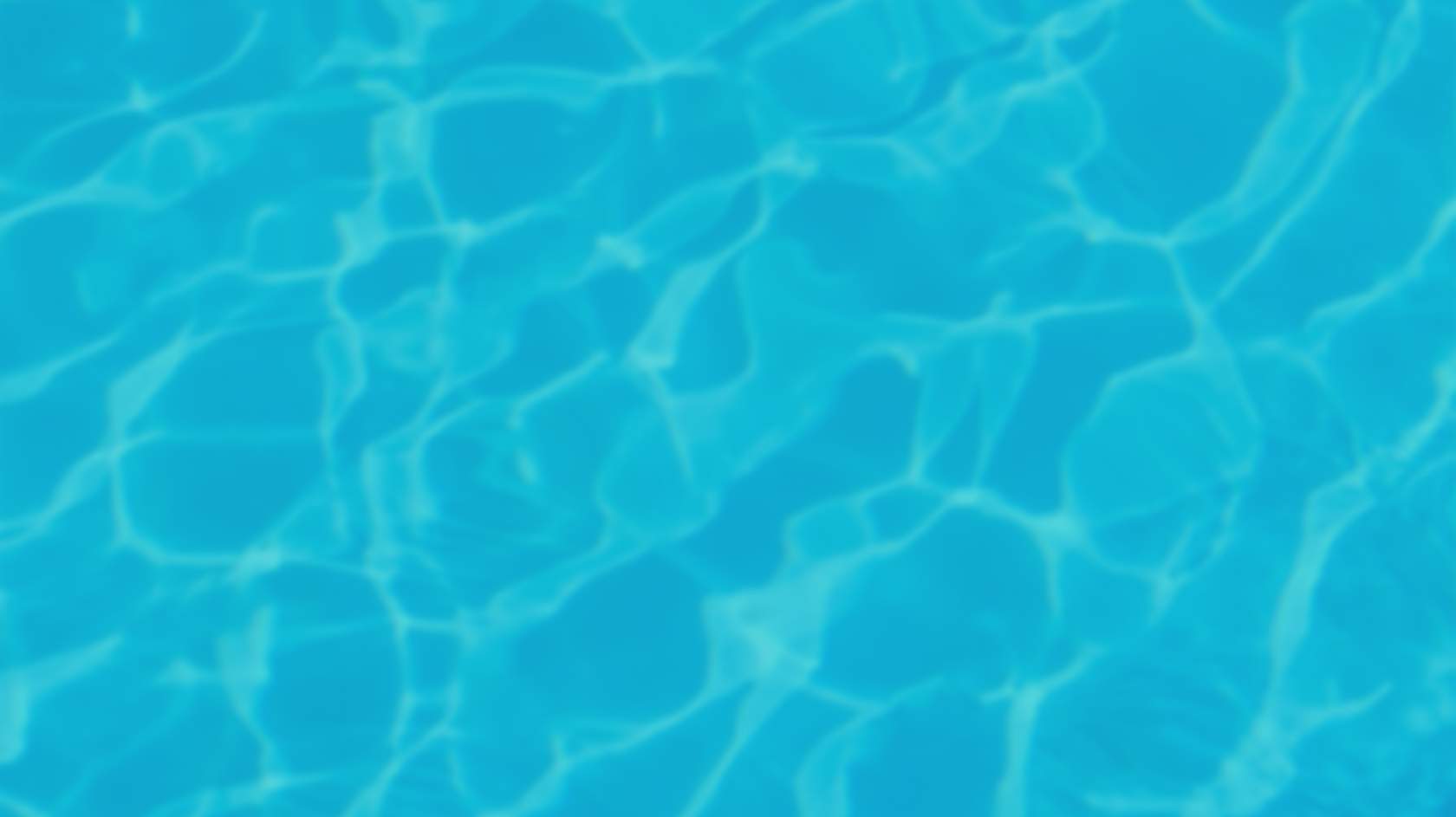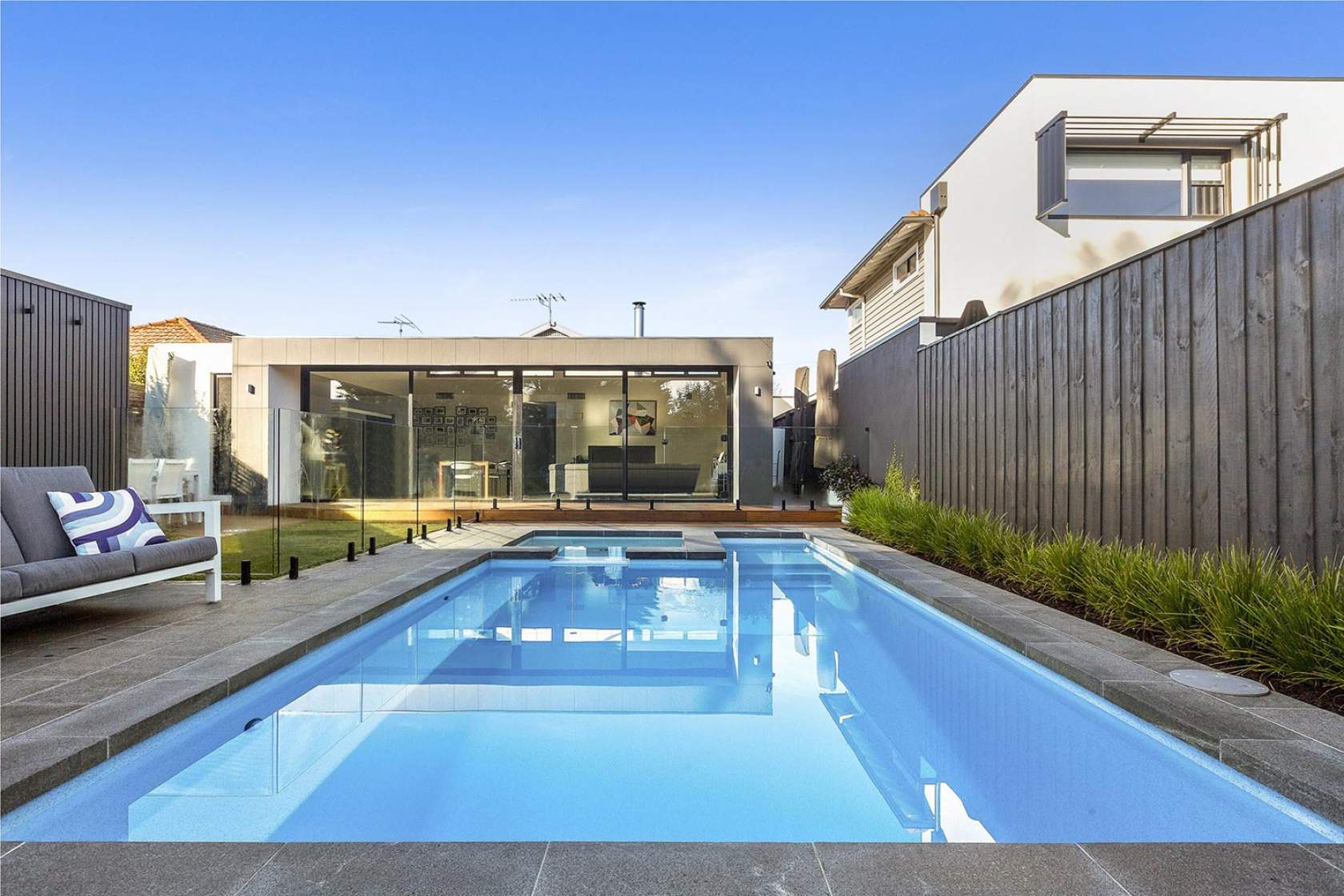

- Home >
- Caring for your Pool & Spa >
- Water Quality > Sanitisers
Pool Sanitisers
Bacteria grows in any untreated body of water, posing a serious health risk. Sanitising pool water treats bacteria caused by a wide variety of sources such as rain, dust, insects and birds. Sanitiser levels need to be maintained to keep bacteria at bay and aid in controlling algae. Chlorine is the most common sanitiser and comes in various forms to suit the needs of different pools and equipment, as well as bather load and climate.
An adequate level of residual sanitiser will deter any unwanted contaminants without affecting the quality of the water. Regular testing and chlorine top-ups will help you maintain the desired residual level of 1.0 to 3.0ppm (parts per million).
Whatever form of chlorination you use, for it to work efficiently, the pH must be maintained within the recommended range.
Free Available Chlorine can be tested with a test kit or by taking a water sample to be tested at your local SPASA pool shop or by a Pool and Spa Service Technician.
Note: After start-up, refer to the manufacturer’s documents provided with the pool sanitisation system for information on operation and maintenance of your swimming pool/spa.
Types of sanitisers
Salt chlorination uses dissolved salt and electrolysis to chlorinate pools and spas, overcoming the limitation of hand dosing by producing chlorine on site through a generator. Current estimates place salt chlorination in over 85% of all pools in Australia and New Zealand.
Pros:
Easy to use – with inbuilt timers giving the ability to schedule regular cycles
Chlorine output is easily adjustable depending on the time of year or bather load
Inexpensive to run.
Minimal maintenance required.
Able to be used for mineral pools and salt pools
Cons:
The salt level needs to be tested monthly, or after heavy rain, and salt added if required. The salt level MUST be kept within the manufacturers’ guidelines.
pH level increases as chlorine is added to the water, adjust with acid
Salt chlorinators are not ideal for super chlorination (shocking) as the chlorine making process is slow. Use of a shock treatment is a better alternative.
Salt cells need to be cleaned from time to time. Reverse polarity cells are self-cleaning but may need to be cleaned if a build-up of calcium is visible on the cell.
Salt cells have a life span of 3-5 years
These systems are typically a hybrid solution that combines two traditional methods of sanitising water. Ionisation and Oxidisation are combined together to deliver crystal clear water that is very soft to swim in and has no smell, feel or taste of chlorine or high salt and minerals.
Pros:
Programmed to size of your pool making it simple to use
Ideal for asthmatics, psoriasis and eczema sufferers
Up to 50% less chemical and 80-90% less salt/minerals
Longer lasting pool equipment and pool surrounds
Water saving – re-use water for garden or grey water
More environmentally friendly
Cons:
Very high copper levels can cause staining
Electrodes will need replacing (average 3-4 years)
Phosphate levels should be checked every 8-12 weeks
There are many mineral blends that provide an alternative sanitation system based on electrolysis technology. Minerals are added to the pool water and the chlorinator generates the chlorine in the pool water. This system typically uses Magnesium and Potassium based products as an alternative to Sodium only systems.
Pros
Enhanced bather comfort for swimming
Gentle on skin and eyes
Suitable for those with skin allergies
Enhanced water clarity due to natural flocculants
Cons
Chlorinator may need to be changed to be compatible with a mineral system
More expensive to maintain due to higher cost of minerals
Note: After start-up, refer to the documents provided with your particular system for information on operation and maintenance of your Mineral Pool.
Liquid Chlorine is a cost-effective way to sanitise your pool. It is safe enough to sanitise drinking water and powerful enough, in the right concentrations, to kill bacteria, germs and viruses. It also oxidises as it sanitises, helping to keep your pool clear.
Pros:
Cost effective sanitising option - Usually use between 0.75 and 1.5 litres per 50,000 litres of pool water, per day, in a stabilised pool, depending on temperature
Can buy in bulk 15 litre drums
Suitable for use in liquid chlorine feeders
Totally soluble – no residue
Safe for pool surrounds, such as tiles
Cons:
pH level increases as chlorine is added to the water, adjust with acid
For longer lasting results requires use of a stabiliser
Short shelf life, keep out of sunlight and hot environments
Classified as a dangerous good
A concentrated form of chlorine it has a strength of 65-78% chlorine. Calcium Hypochlorite is supplied as a granular product and has a long shelf life.
Pros:
Most cost effective of the granular chlorines - usually use up to 200 grams per 50,000 litres of pool water, per day, in a stabilised pool, depending on temperature.
Can buy in bulk containers
Does not contain a stabiliser - so can use indefinitely
Long shelf life
Easy to source from pool shops, hardware stores and supermarkets
Cons:
Calcium based product can turn the pool cloudy if not dissolved
pH level increases as chlorine is added to the water, adjust with acid
For longer lasting results requires use of a stabiliser
Can bleach the colour from interior lining if granules are not dissolved
Long term use will raise calcium levels
A concentrated form of chlorine it has a strength of 50-63% chlorine and contains cyanuric acid (stabiliser). Supplied as a granular form, it has a long shelf life. A user-friendly way to achieve consistent chlorine and stabiliser levels for better protection.
Pros:
Totally soluble, fast dissolving and leaves no residue
No effect on pH
Contains stabiliser – the chlorine will last longer in the pool
Calcium levels will not increase
Will not make the pool water cloudy
Easy to source from pool shops, hardware stores and supermarkets
Cons:
More costly product
Not suitable for long term use as stabiliser level will increase
A concentrated form of chlorine, these tablets have the strength of 90% chlorine. Available in tablet, stick or granular forms, they are most often used in smaller above ground pools in a floating dispenser or in-line feeder where they slowly dissolve. This form of sanitiser is also available in a powder form which is ideal for treating Black Spot Algae.
Pros:
Easy to use in a floater dispenser
Suitable for above ground pools
Contains stabiliser – chlorine will last longer in the pool
Cons:
Very acidic, alkalinity will need to be checked frequently
Cannot be used for super chlorination (shocking)
Not suitable for long term use as stabiliser level will increase
Pellets are a mix of Stabilised Chlorine and TCCA Chlorine (used in stabilised tablets and powder). These are great for boosting chlorine levels or super chlorination (shocking).
Pros:
Totally soluble – no residue
Little to no effect on pH
Great product for shocking a pool
Contains stabiliser – the chlorine lasts longer in the pool but if this type of sanitiser is used regularly the water must be drained and replaced periodically
Cons:
Too expensive for regular use
Dose rate can be difficult to calculate, depends on water temperature (more will be needed in Summer than in Winter due to the heat)
Alternative sanitisers
Sold in a tablet form, this sanitiser is perfect for spas.
Pros:
Easy to use in a floating dispenser
Totally soluble – no residue
Does not contain a stabiliser - so can use indefinitely.
It does not form “Bromamines “, the equivalent of Chloramines, so no sore eyes or itchy skin
Effective sanitiser at high water temperatures such as spas
Cons:
Very acidic, alkalinity needs to be checked frequently
Expensive, mostly used in smaller bodies of water like spas
Ionisers use copper and silver anodes to sanitise water. The silver anode controls bacteria and the copper anode controls algae. Ionisers are supplied with a dedicated test kit to measure the levels in the pool.
Pros:
Inexpensive option for sanitising
Less chemicals
Chlorine free
Cons:
Chlorine or a non-chlorine oxidiser will still need to used to oxidise the water
High copper levels can cause staining to the pool
Electrodes will need to be replaced
Ozone is a modified highly reactive form of oxygen (03), it is one of the strongest forms of oxidisers available, stronger than chlorine, bromine & hydrogen peroxide. Ozone is 25 times more powerful than chlorine
Pros:
Powerful sanitiser
Little effect on pH
Effective at high water temperature
Cons:
Ozone has a short life and leaves no residual sanitiser, unless the filtration is running 24/7 a secondary chlorinator such as a salt chlorinator or chlorine doser is required
Expensive, mostly used in smaller bodies of water like spas, rarely used in domestic pools
A liquid sanitiser that is chlorine and bromine free it is gentle on skin, hair, and clothing, making it a good option for allergy sufferers.
Pros:
Easy to use, easy to measure, pour in
Very safe to use
No effect on water balance
Only added weekly
Unaffected by sunlight
Acts as a flocculant for clearer water
Inexpensive to use
Cons:
Used as a three-part system - used in conjunction with an oxidiser and an enzyme biofilm remover
Not compatible with chlorine or bromine
The flocculent effect leads to more frequent filter cleans
